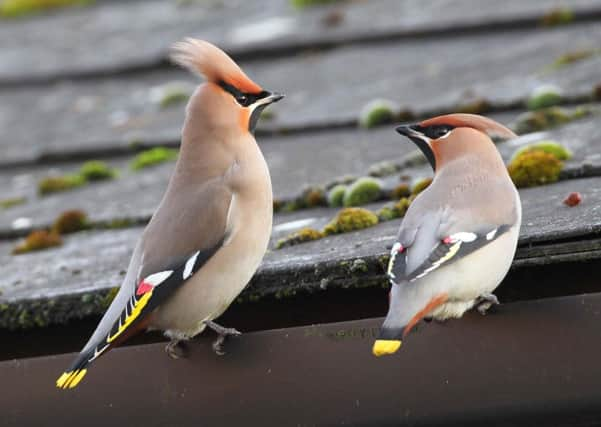Birdwatch: Abundant berry crop could see more waxwings arrive


Small groups of these beautiful visitors from the northern forests of Scandinavia and Russia have been arriving along the east coast this week and some have moved further inland with sightings in several places in North, West and South Yorkshire over the past few days.
They are easily identified, starling sized and with an orange-brown crest sweeping up from the head.
Advertisement
Hide AdAdvertisement
Hide AdTheir name comes from the red blobs on the wings which make it look as if some of the feathers have been dipped in red sealing wax while there is another red patch under the tail which is edged with yellow – there are also yellow stripes on the wings. There is also a black stripe through the eye and black bib.
In summer waxwings eat mosquitoes and midges but when autumn comes they switch to berries, gathering on rowan trees, in hawthorn hedges and on cotoneaster bushes to eat the fruit.
As rowan trees and cotoneaster bushes are often planted around supermarket and garage car parks and roundabouts, waxwings are quite often reported in such locations and, as they have little fear of man, are easy to watch even in busy town centres.
Numbers arriving here vary greatly from year to year. Last winter there were hardly any compared with a large influx, or irruption as it is known, the year before that.
Advertisement
Hide AdAdvertisement
Hide AdA great deal depends on the availability of fruit for the waxwings to feed on in Scandinavia and Russia.
If the crop is a poor one it could be that the waxwings, competing with larger birds such as blackbirds, redwings and fieldfares, are short of berries and have to move south west to find more.
There is an abundant berry crop here this autumn and the prospects of more waxwings arriving look promising although we will have to wait a little longer to see if this turns out to be a waxwing winter.
Strong northerly winds brought the first little auks of the autumn down the Yorkshire coast from the high Arctic while there were also long-tailed ducks off Flamborough, Bridlington and on Hornsea Mere while one was seen inland at Pugney’s Country Park near Wakefield.
Advertisement
Hide AdAdvertisement
Hide AdA grey phalarope was seen off Flamborough while pomarine skuas and great northern divers were also reported by sea watchers.
A vagrant from North America, a Bonaparte’s gull, was seen off Barmston on Saturday while the first glaucous gull of the autumn was also back in the region.
An Eastern black redstart, a subspecies from Asia and a rare vagrant to this country, was still present on the shore at Skinningrove north of Whitby this week while on Monday another was found at Hartlepool Headland.
Slavonian grebes were seen at Hornsea Mere and again at Skelton Lake, Leeds, while a red-necked grebe was seen off Spurn.
There were also inland sightings of a kittiwake at Potteric Carr and red-breasted merganser at Hatfield Moors.